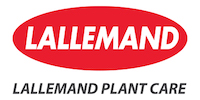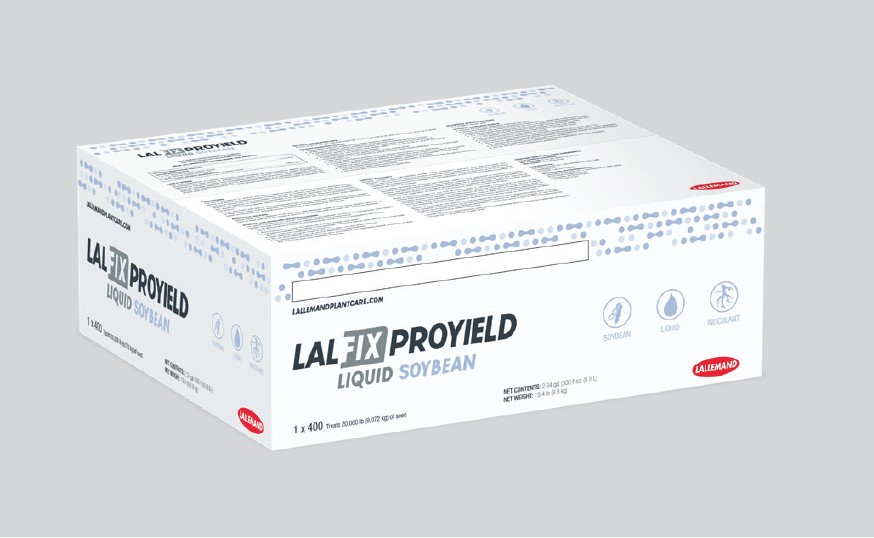It’s standard practice for retailers and seed treaters to try new products, but before they offer them to their customers they want to be assured of quality and first-hand results.
In 2020, Scott Perkin, owner and manager at Perkin Seed & Soil in Elgin Manitoba, tried out LALFIX® PROYIELD Liquid Soybean. “We liked the ease of use,” he says. “But what we really like about the product is the simplicity of the single bladder. We don’t have to add another bladder or extender or take extra time to mix products together. As a treater, that saves us time and makes our life easier.”
Perkin and his team also really liked the two SKUs. “It is nice to have a smaller SKU available for treating some of the smaller acres,” he says. “Ninety per cent of our beans got LALFIX® PROYIELD Liquid Soybean in 2021 and we plan on using it going forward.”
Multiple reasons for unprecedented performance
Beyond ease of use, this premium liquid inoculant boosts yield in not just one way, but in several revolutionary ways. The first is earlier and much denser nodulation on both crown and lateral roots, explains Brenton Belos, Technical Sales Representative (Manitoba) for Lallemand Plant Care.
“LALFIX® PROYEILD stimulates the production of ureides in the soybean plant,” he explains. “The concentration of ureides is directly linked to the level of nitrogen fixation in the nodules. That is, the more ureides present, the more fixed nitrogen that is transported out of the nodules and into circulation throughout the plant.”
In addition, LALFIX® PROYIELD Liquid Soybean contains two new unique strains of Bradyrhizobium elkanii, which is a new rhizobium species now available to Canadian farmers.
Brand-new strain
These new and unique strains of B. elkanii led to earlier nodulation and extension of the nodulation period through better utilization of the nitrogenase enzyme. “Soybean growers therefore gain a week of nitrogen fixation on the June side and a week longer on the August side,” Belos explains. “Typically, nodules are seen at the V2 to V3 stage, but our Canadian customers who used the product this spring have let us know they are seeing nodulation at V1. In addition, the early nodulation is dispersed over both the crown and lateral roots.”
The other bacterium is a proprietary strain of Delftia acidovorans. It is proven to promote plant growth through aggressive colonization of the root zone, resulting in more crown and lateral root mass and more root hairs. “More root hair growth is especially important because nodules form at the end of root hairs,” Belos explains. “We are seeing 20 to 40 per cent more nodulation in our lab studies. This strain of Delftia acidovorans is proprietary to us.”
IDC risk reduction
The enhanced root growth caused by D. acidovorans not only increases nodulation potential and water uptake, but also nutrient availability, leading to early vigour and higher soybean yields.

The availability of both iron and sulphur are increased. Partner studies with university researchers have found that D. acidovorans produces a significant amount of chelating molecules (siderophores) which help solubilize iron, making it more available for plant absorption. “The risk of iron deficiency chlorosis (IDC) is reduced, although of course, growers should choose an IDC-tolerant variety if they have soils that are prone to causing this condition,” says Belos. “This species also renders more sulphur available to the plant.”
Nathan Potucek, a producer from Warren, Minnesota, said last year “we have a high pH level in our soils, and I think the LALFIX® PROYIELD Liquid Soybean really helps with the nitrogen and iron uptake early on. It is very important to get the plants off to a fast start, especially in our IDC-hot soils.”
Belos urges treaters, retailers and growers to give LALFIX® PROYIELD Liquid Soybean a try in 2022.
“This is a novel and extremely innovative new soybean technology,” he says. “It contains an entirely new species of rhizobacteria, not just a new strain, and in combination with a proprietary strain of Delftia acidovorans, it’s producing results that I’ve never seen before and neither have our customers in the U.S. and Canada. If I am a grower looking to maximize my return with soybeans, this is something I want to be taking a look at.”
Dedicated to new technology
LALFIX® PROYIELD Liquid Soybean is one of the many science-backed microbial technologies that have been created by Lallemand to help its customers achieve better performance.
Started in the late 1800s and headquartered in Montreal, it is owned and operated by the Chagnon family and currently led by Antoine Chagnon, marking the family’s third generation of proud ownership. The company has 11 global business units, with 4,500 employees in 45 countries, servicing customers in agriculture and many other sectors.
“Lallemand invests thousands of hours in its own lab and field research with more than 400 scientists worldwide, and also has many partnerships with researchers at major universities and research centres around the world,” says Scott Gray, Commercial Manager for Lallemand Plant Care, Canada.
“Lallemand’s focus is understanding plant-microbe interactions and finding the most effective natural solutions. When you purchase a Lallemand product, you are buying much more than high-performance biologicals, you are receiving science-backed, proven technologies. This applies to every one of our products, including our new LALFIX® PROYIELD Liquid Soybean premium inoculant.”










